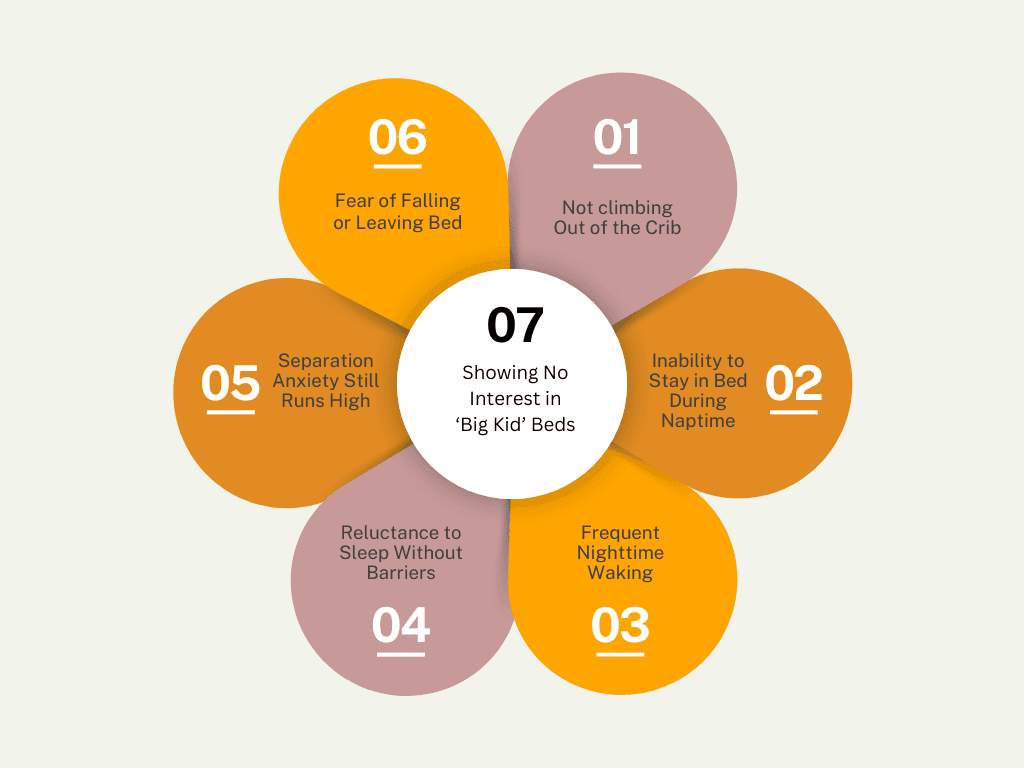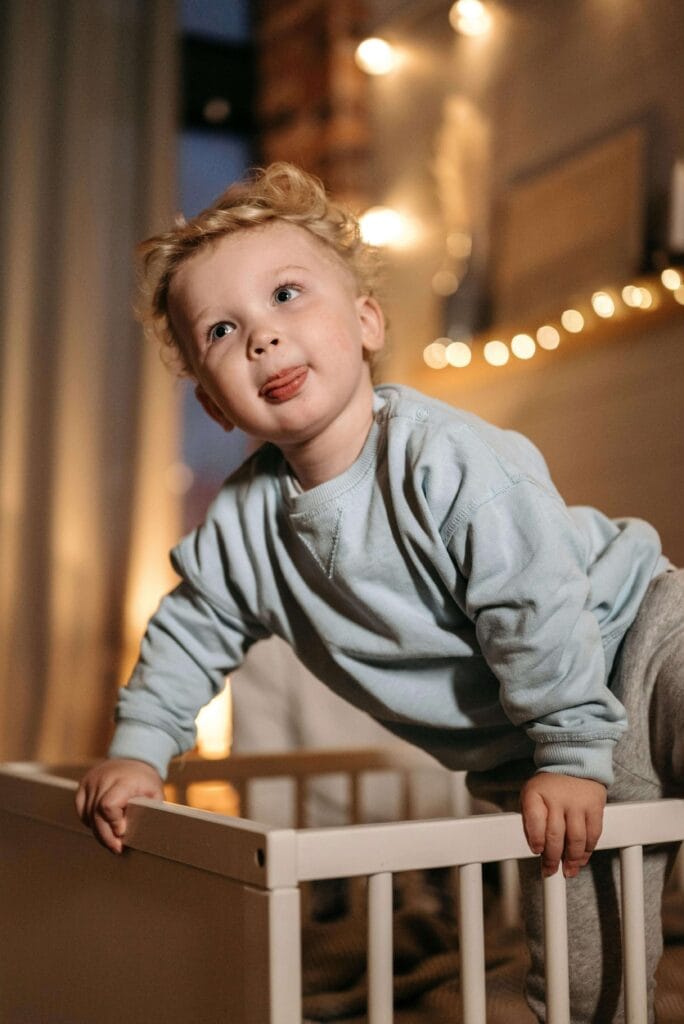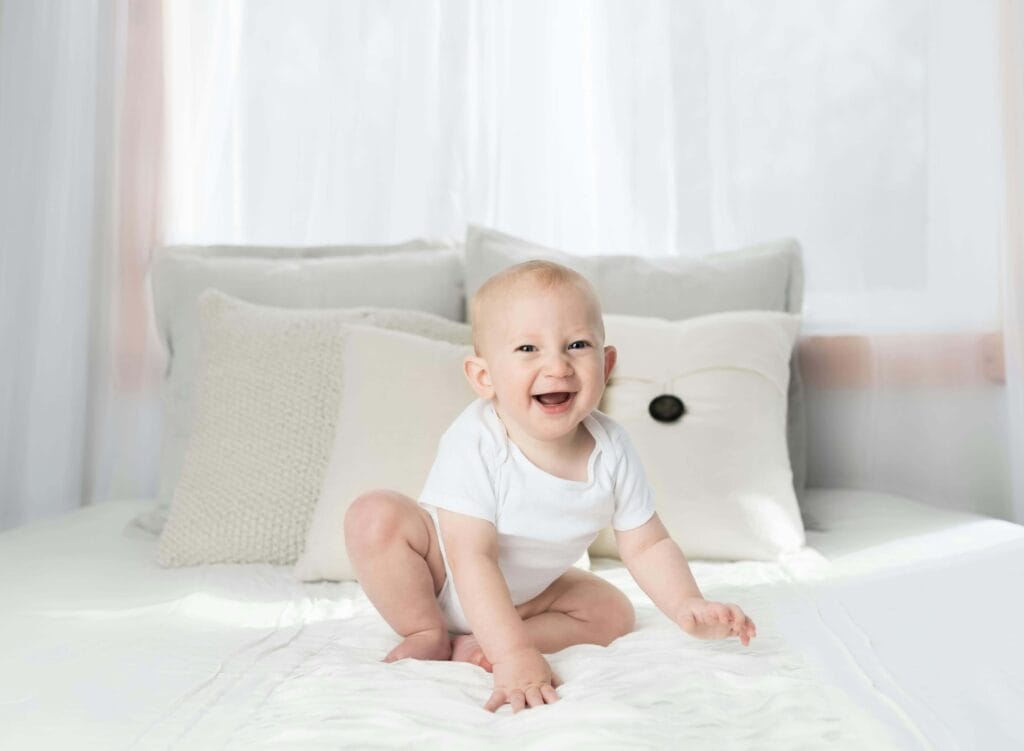Table of Contents
Moving your toddler from a crib to a big-kid bed is a big decision that every parent faces. But rushing into it before your child is not ready can lead to restless nights, frustrated parents, and an unhappy toddler. So how do you know if it’s time? Let’s explore seven clear signs that your toddler is not ready for transitioning to a bed.

Why Timing Matters in Transitioning to a Bed
While some toddlers are eager to leave their cribs behind, others may not be emotionally or physically ready for such a big change. Transitioning too early can create unnecessary challenges, both for the child and for you as a parent. Children often rely on the comfort and safety of the crib as a place of security. Pushing them into a new sleeping environment before they are ready can cause sleepless nights, increased anxiety, and behavioral issues.
It’s essential to follow your toddler’s cues, taking into consideration both emotional and physical readiness. The key to a successful bed transition is patience, not rushing the process.
1
Climbing Out of the Crib is Not an Issue

One of the clearest signs that a toddler is ready for a bed is when they begin climbing out of their crib. If your child is still content staying inside their crib and isn’t trying to make a daring escape, there’s no need to rush the transition. Toddlers who haven’t yet figured out how to climb out of the crib likely still feel secure within its confines.
Climbing out of the crib shows a level of physical development, coordination, and curiosity that signals readiness for more independence, like sleeping in a bed. If your toddler hasn’t started scaling the sides of the crib yet, they’re probably not quite ready for a bed.
2
Inability to Stay in Bed During Naptime
Naptimes can be a good indicator of whether your toddler is ready for a bed. If your child struggles to stay in bed during naps, constantly getting up or wandering around the room, this is a sign that they may not be emotionally ready for the freedom that a bed offers.
Children need to develop the ability to stay in bed and understand the concept of staying put during sleep times. Naptime is typically more difficult for toddlers to manage since they don’t always feel as tired, and the temptation to get up and explore can be overwhelming.
3
Frequent Nighttime Waking
Restless nights are another major sign that your toddler may not be ready for a bed. If your little one frequently wakes up in the middle of the night and has difficulty falling back asleep on their own, they may not be prepared for the independence that comes with sleeping in a bed.
Nighttime waking could be related to many factors, such as emotional regulation, anxiety, or the inability to self-soothe. If your child isn’t able to sleep soundly through the night, staying in their crib where they feel more secure might be the best option for now.
4
Reluctance to Sleep Without Barriers
The transition from a crib, which offers a sense of containment, to an open bed can be overwhelming for toddlers. If your child shows signs of distress, anxiety, or reluctance when introduced to a bed without barriers, this might be a sign that they are not ready yet.
Many toddlers find the physical walls of a crib comforting because it mimics a cocoon-like environment. This safety net can be especially important for toddlers who need that security to fall asleep. If your child becomes anxious when the idea of sleeping in an open bed is presented, it’s best to wait until they feel more secure.
5
Separation Anxiety Still Runs High
Separation anxiety is common in toddlers, and it can significantly affect their readiness for a bed. If your child still struggles with separation anxiety at night, they may not feel ready for the added independence that comes with leaving the crib.
Transitioning to a bed often comes with a sense of freedom, but also a sense of distance from parents. If your toddler is still experiencing intense separation anxiety at bedtime, it’s better to hold off on the transition and allow them more time to feel secure.
6
Fear of Falling or Leaving Bed
Physical readiness is just as important as emotional readiness. If your child shows signs of fear, such as worrying about falling out of bed or frequently attempting to leave the bed once placed in it, this is a red flag that they are not quite ready.

Children who are physically ready for a bed should be able to get in and out of it with ease and without fear. If your toddler seems nervous about this, you may want to keep them in the crib a little longer.
7
Showing No Interest in ‘Big Kid’ Beds
Another key indicator that your child isn’t ready for a bed is their lack of interest in a ‘big kid’ bed. Enthusiasm for growing up and moving into new stages is a natural part of a toddler’s development. If your child seems indifferent or even resistant to the idea of sleeping in a bed, it’s a strong sign that they’re not ready.
Encouraging your toddler to be excited about this change can help, but if there’s no interest at all, it’s best not to force the transition.
How to Know When It’s Finally Time for a Bed
So, how do you know when your toddler is ready? Look for a combination of physical signs (like climbing out of the crib) and emotional readiness (such as showing excitement about a new bed). Most children transition to a bed between the ages of 2.5 and 3.5 years old, but every child is different.
Patience is key—there’s no rush! When your toddler starts to show curiosity about sleeping in a big kid bed, begins climbing out of the crib, and can stay in bed for naps, you’ll know the time is right.
Making the Transition Smooth
Once your child is ready, here are some tips to make the transition smoother:
- Involve your child in choosing the bed or bedding.
- Make the bed feel familiar by using the same sheets and comfort items they had in the crib.
- Set clear rules and routines about staying in bed.
- Use a guardrail to prevent falls and provide a sense of security.
How to Handle Setbacks and Regressions
Don’t be surprised if your child faces some bumps along the way. Regressions are normal, especially during big transitions. If your toddler starts having trouble staying in bed or expresses fear, try to be patient and offer reassurance. Sometimes it might help to go back to the crib for a bit longer if needed.
Conclusion
In conclusion, moving your toddler to a bed is a big milestone, but it’s important to follow their lead. Watch for the signs that they are ready and take your time. Rushing the process can lead to setbacks, but with patience and understanding, the transition can be smooth and successful.
FAQs
When is the best age to transition a toddler to a bed?
The typical age range is 2.5 to 3.5 years old, but readiness is based more on developmental signs than age alone.
What if my toddler climbs out of the crib but doesn’t sleep well in a bed?
If your toddler climbs out but struggles in a bed, try using a toddler rail and ensure the room is child-proofed for safety.
How can I make the bed safer for my toddler?
Use guardrails, keep the bed low to the ground, and remove any nearby hazards.
Should I wait until my toddler asks for a bed?
It’s a good idea to wait for interest, but if safety becomes an issue (like climbing out of the crib), it may be time to make the switch.
How can I manage bedtime with two children at different stages?
Create separate routines for each child, focusing on their individual needs and giving them a sense of independence in the process.
